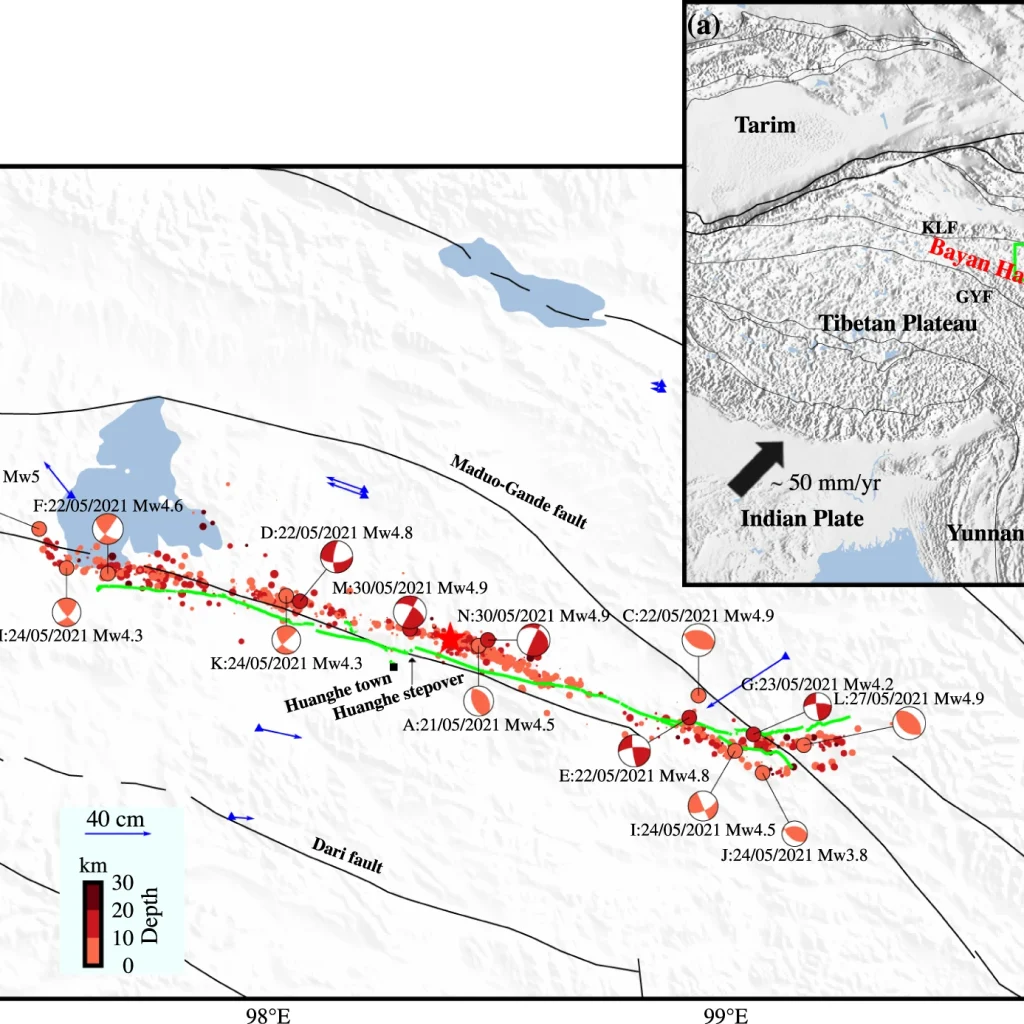In a groundbreaking study published in the Journal of Geophysical Research: Solid Earth, researchers have shed new light on the intricate behaviors of Earth’s fault systems. By employing advanced geophysical methods, the team has uncovered patterns that challenge longstanding assumptions about fault mechanics and seismic activity.
Utilizing a combination of seismic data analysis and state-of-the-art modeling techniques, the study reveals that certain faults exhibit unexpected movements, suggesting a more complex interplay of geological forces than previously understood. These findings not only enhance our comprehension of tectonic processes but also have significant implications for earthquake prediction and hazard assessment.

Fig. 1: Tectonic setting. From: Complex strike-slip faulting during the 2021 Mw7.4 Maduo earthquake
The research emphasizes the importance of continuous monitoring and reevaluation of geological models to better anticipate seismic events. As our planet’s dynamic systems continue to evolve, studies like this underscore the necessity for innovative approaches in geoscience research.
For a more detailed exploration of the study and its methodologies, readers are encouraged to consult the full article in the Journal of Geophysical Research: Solid Earth.



